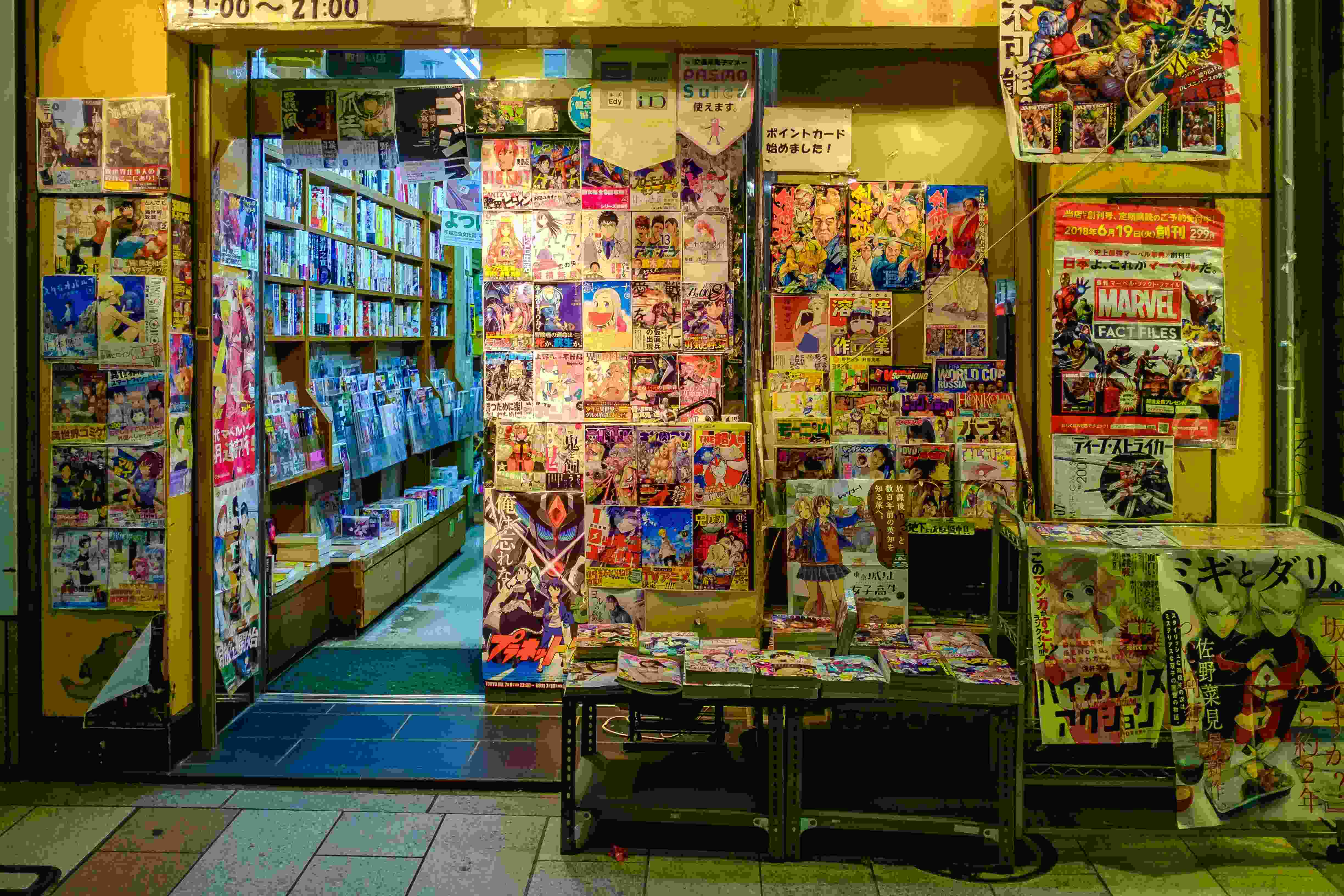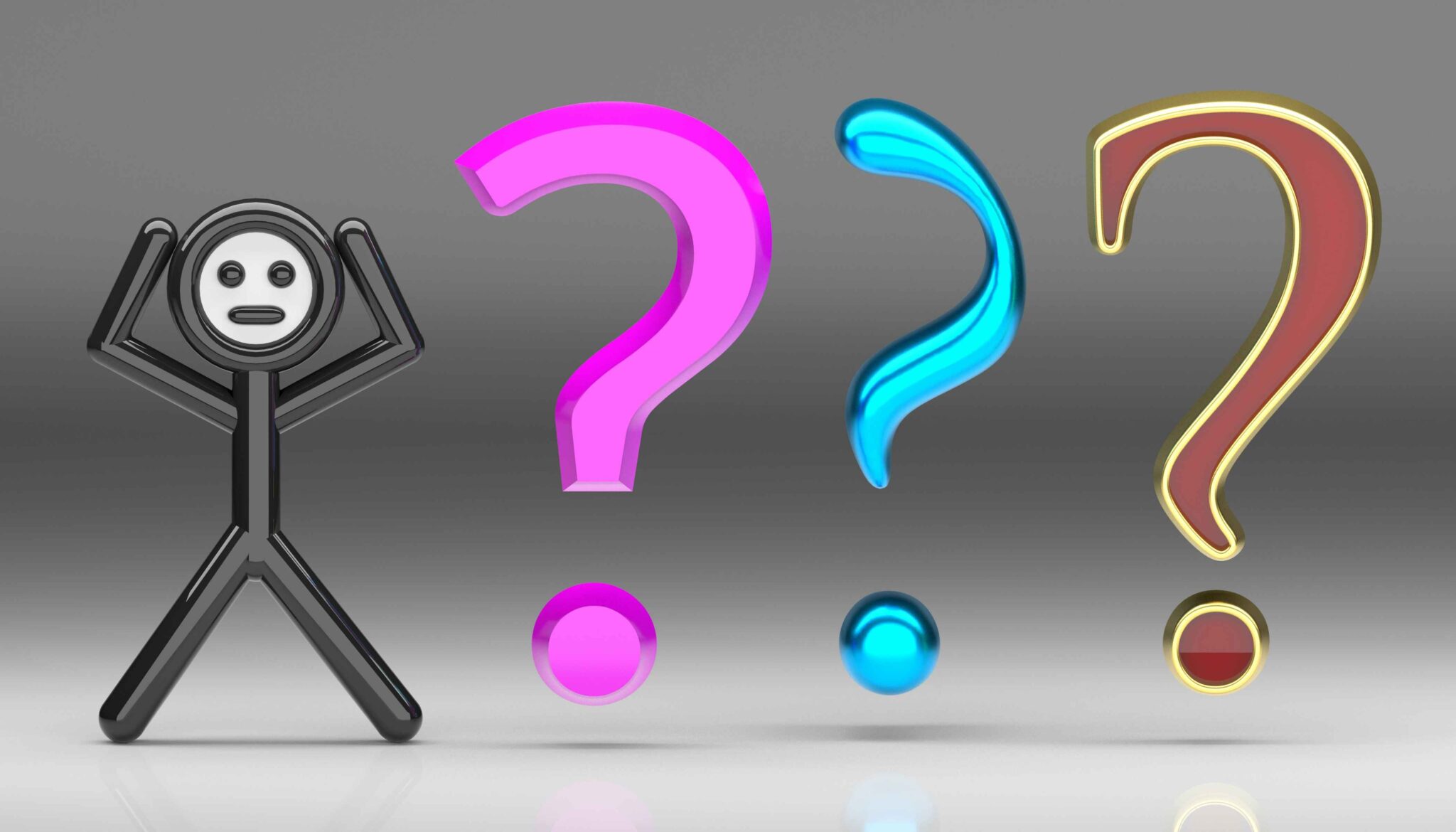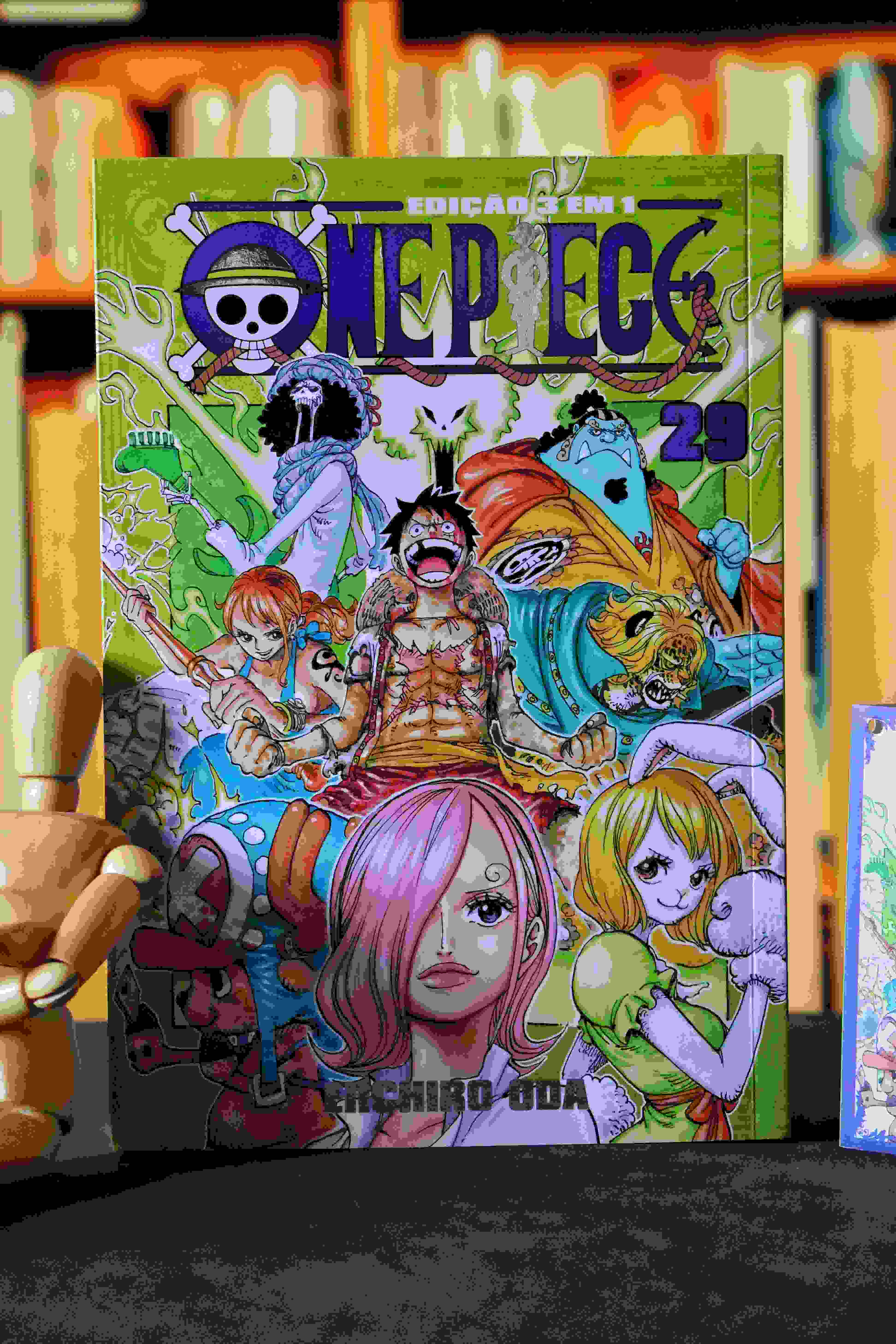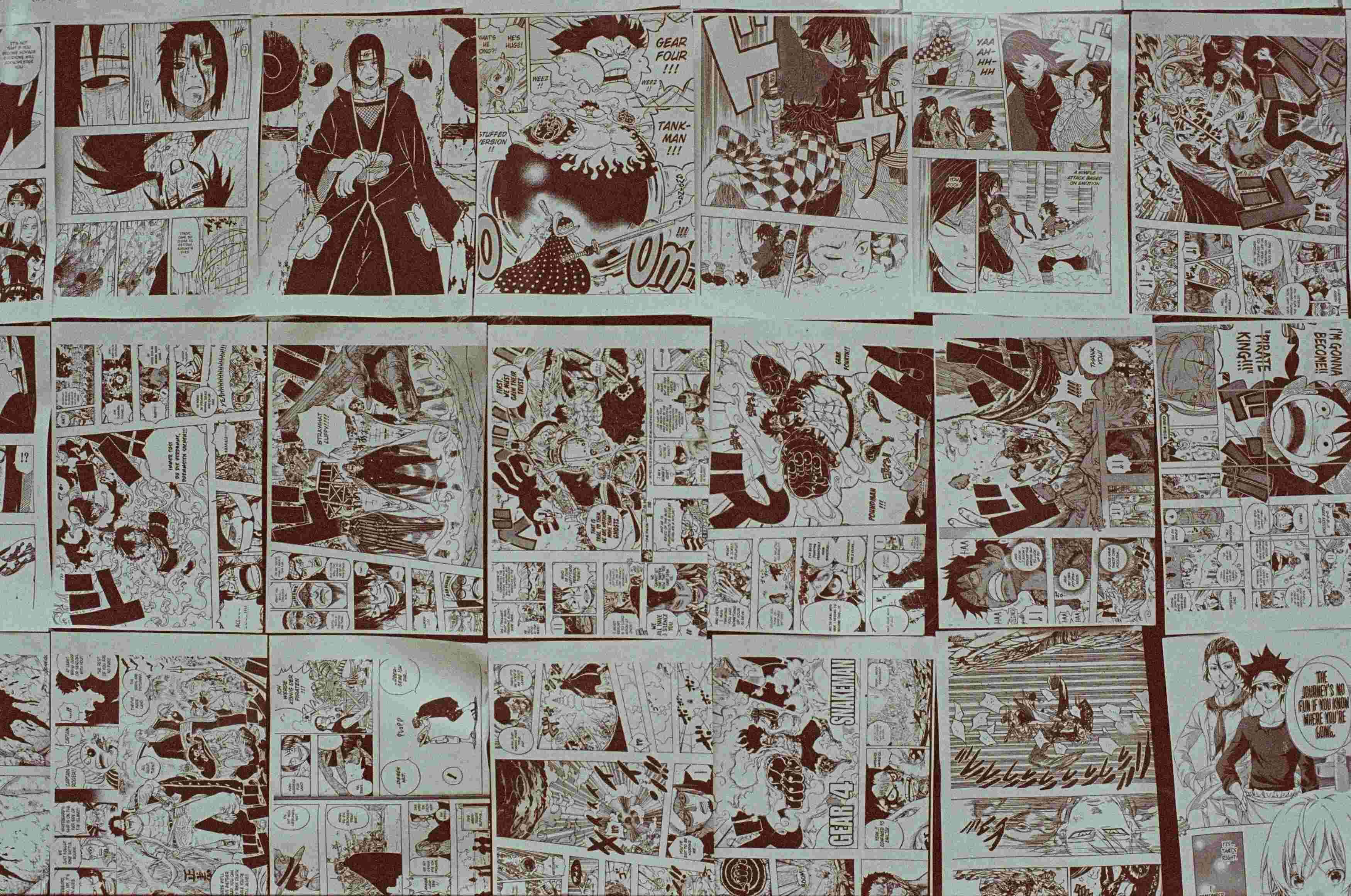
🖋️ How Manga Is Made: From Scribble to Masterpiece
Ever wondered how manga is made? Like, how does one person’s daydream about pirates, demons, or high school vampires turn into the masterpiece you binge-read at 3 a.m.?
It’s not magic (though it often feels like it).
It’s months of sleepless nights, caffeine-fueled sketching, teamwork, and surprisingly technical processes.
Let’s break down the full process — step-by-step, with all the people involved, tools used, and hardships faced. This is your ultimate behind-the-scenes look at how manga is created — straight from real mangaka interviews and insider facts.
👥 Who Makes Manga? The Team Behind How Manga Is Made

Creating a manga isn’t a solo job — even if some mangaka act like one-man armies he alone can’t create the whole manga. Let’s meet the real crew behind the magic:
1. Mangaka{ The most important person in manga making}
(Writer + Artist = Creative Mastermind)
Comes up with the story idea, characters, world, and usually does the artwork too.
Many famous mangaka like Eiichiro Oda (One Piece) and Tite Kubo (Bleach) do almost everything themselves.
They live under constant deadlines — some draw 20+ pages per week!
💡 Did You Know? Death Note’s artist Takeshi Obata worked with a separate writer, Tsugumi Ohba — a rare but successful example of a writer-artist duo in manga.
2. Editor
(Creative Partner + Harsh Critic)
Helps shape the story, refine dialogue, and suggest changes.
Makes sure the manga fits the magazine’s tone and audience.
Sometimes decides which characters live or die (yes, really).
🧠 Fact: Editors often meet with mangaka once or twice a week to go over drafts and give feedback — they are often former writers or literature majors themselves.
3. Assistant Artists
(Background Builders & Detail Demons)
Add backgrounds, props, crowd scenes, and small details the mangaka doesn’t have time for.
Big names like Kentaro Miura (Berserk) had 5+ assistants working on every chapter.
🌳 Some assistants specialize only in trees or buildings. That beautiful forest in your favorite manga? Probably drawn by “the tree guy.”
4. Digital Toners & Effects Artists
(Mood Makers)
Use digital software to apply screentones (shading), lighting, blur, and motion effects.
These techniques add drama and emotion without overwhelming the art.
5. Letterers
(Dialogue Artists)
Carefully place dialogue, sound effects, and expressions inside panels.
Their work affects how fast or slow a reader goes through the story.
6. Translators & Localization Team
(Global Storytellers)
Translate the manga into other languages, while keeping the tone, humor, and cultural meaning.
Often have to rework jokes, puns, and even entire scenes to make them understandable for a non-Japanese audience.
7. Publisher & Marketing Team
(The Business Side)
Print the manga, distribute it in stores and online, and handle promotion.
Responsible for licensing deals, anime adaptations, and merchandise.
📚 "How Manga Is Made from Scratch – 12 Crucial Stages From idea to the Journey of a Masterpiece.

🧠 Step 1: Where the Manga Creation Process Begins — The Idea”
Every manga begins with a creative spark — and understanding how manga is made starts here, with a messy notebook and a dream.
A weird dream, a late-night thought, or even an embarrassing moment in high school.
The mangaka writes a basic story concept, characters, and main plot.
No fancy software — just messy notebooks or voice memos.
📓 Hajime Isayama, creator of Attack on Titan, first came up with the series while working at an internet café. He drew the earliest Titans with a mouse.
✍️ Step 2: Writing & Planning the Story
The mangaka creates a full story outline with a beginning, middle, and end.
Then they plan story arcs (like a season in a TV show).
They define each character’s personality, backstory, and motivations.
📌 This phase can take weeks or even months before a single page is drawn.
🧑🎨 Step 3: Designing Characters and the World
Now comes the fun part — making things look cool.
Main characters are designed with attention to clothes, hair, eyes, and vibe.
The world is sketched out — cities, schools, fantasy landscapes, etc.
🎨 Tite Kubo (Bleach) said that design comes first for him. He often designs a character’s outfit before deciding their role in the story.
📒 Step 4: Making the Name (ネーム)
This is a rough sketch of the manga chapter — it includes:
Stick-figure characters
Dialogue bubbles
Camera angles and panel layouts
This draft is shown to the editor for review.
🎯 Think of the name like a “script” + “storyboard” for manga.
🖋️ Step 5: Editor Feedback
The editor reads the name and gives feedback like:
“Make this panel bigger.”
“This scene is too fast.”
“The punchline doesn’t land.”
💥 Fun Fact: Editors at Weekly Shonen Jump sometimes reject a chapter 5–6 times before approving it for final art.
✏️ Step 6: Drawing the Final Version
This step is one of the most crucial in how manga is made, as it defines the pacing, action, and feel of each page.
Time to draw the real pages, using either traditional pens or digital tablets.
Clean line art is drawn.
The mangaka adds facial expressions, action poses, and visual flow.
Panel borders are finalized.
🏞️ Step 7: Backgrounds and Screentones
Assistants now add:
Buildings, trees, cityscapes
Motion lines, explosions
Screentones for shading and emotion
🎬 Think of this step like lighting and camera effects in a movie.
💻 Step 8: Digital Effects and Polish
Modern tools have revolutionized how manga is made today, This digital leap is now a huge part of how manga is made in the 21st century, especially in web serialization. allowing more polish and emotion than ever before.
Using tools like Clip Studio Paint, effects like:
Glow
Blur
Dust and debris
Rain or snow
…are layered in to enhance the mood.
🧠 Many modern manga are 100% digital, though traditional pen-and-paper mangaka still exist (like Takehiko Inoue of Slam Dunk).
🔤 Step 9: Dialogue, Lettering, and SFX
Dialogue is added to the speech bubbles.
Sound effects like BAM! or THUMP! are placed creatively.
The text must fit the emotion and speed of the panel.
📰 Step 10: Publishing
The finished chapter goes to:
A weekly magazine (like Shonen Jump, Young Magazine)
Or a web platform (like Manga Plus, Webtoon)
📉 Only the most popular series continue — the rest are cancelled after a few weeks.
📦 Step 11: Tankōbon (Volume) Release
Once enough chapters are done, they are collected into a volume.
Extras are added like:
Author notes
Mini-comics
Behind-the-scenes sketches
While this is a satisfying milestone in the manga creation process, it’s far from the end — international success can come next.
🌍 Step 12: Translation and International Release
If it’s a hit, the manga gets:
Translated
Licensed by companies like Viz Media or Kodansha
Released globally in print and online
🌐 Some manga like Demon Slayer now release simultaneously worldwide!
🧗♂️ Real Hurdles Mangaka Face
Extreme deadlines (drawing 15–20 pages/week)
Health issues (many mangaka suffer from burnout, eye strain, back pain)
Rejection (most ideas are turned down by editors)
Fan pressure (death threats over character deaths, believe it or not)
💔 Yoshihiro Togashi (Hunter x Hunter) takes long breaks due to chronic back problems — yet fans still wait patiently.
These intense challenges are often invisible when we think about how manga is made, but they’re an essential part of every panel you read.
🔥15 Crazy But True Facts You Never Knew

Want to dig deeper into the manga creation process? These facts will surprise you — and show what really goes into making manga from scratch.
⏰ Mangaka often sleep less than 4 hours a night
→ True. Multiple mangaka, including Eiichiro Oda and Yoshihiro Togashi, have admitted in interviews that during serialization, they sleep 3–4 hours daily due to brutal deadlines.🧠 Eiichiro Oda planned One Piece years in advance
→ True. Oda confirmed he planted clues hundreds of chapters earlier for plot twists like the Will of D and Joyboy.📚 Manga accounts for over 40% of all print publications in Japan
→ True. As of 2022, manga represented roughly 40–45% of Japan’s total publishing market.🖥️ Most modern mangaka use Clip Studio Paint
→ True. Clip Studio Paint is currently the most widely used manga software, preferred even by pros like Boichi (Dr. Stone) and Yusuke Murata (One Punch Man).⏱️ One chapter can take 70+ hours to complete
→ True. Creating 18–20 pages includes storyboarding, penciling, inking, toning, editing — easily 60–80 hours weekly.🧾 Each manga page costs around $100–300 to produce
→ True. Costs include assistants, editor input, and production. Tankōbon printing costs are lower but serializations are expensive.🌎 Manga is a $12 billion+ global market
→ True. The global manga market was valued at $12 billion+ as of 2023, with big sales in U.S., France, and South Korea.🎭 Some mangaka hide their identity
→ True. The creators of Death Note (Tsugumi Ohba and Takeshi Obata) are reclusive. Ohba’s identity is still unconfirmed.🧒 Many famous mangaka were discovered via contests
→ True. Rumiko Takahashi, Takehiko Inoue, and Naoko Takeuchi were all discovered through manga competitions.💔 About 80% of new manga series are cancelled within the first year
→ True. If a manga ranks poorly in reader surveys, it’s quickly axed — often within 10–20 chapters.🎮 Attack on Titan started as a rejected self-published one-shot
→ True. Hajime Isayama’s original draft was rejected by Weekly Jump; he later published it through Kodansha.👀 The oldest manga dates back to the 12th century
→ True. “Chōjū-jinbutsu-giga” (Scrolls of Frolicking Animals) from the 1100s is considered Japan’s first manga.🖊️ Some mangaka finish 15–20 pages in just 3 days
→ True. Fast-paced production exists, especially with experienced assistant teams.📈 Manga sales spike by 3–5x after anime adaptations
→ True. Examples include Demon Slayer, Jujutsu Kaisen, and Tokyo Revengers.👩💻 Digital manga now makes up over 50% of total sales in Japan
→ True. As of 2022–2023, digital surpassed print in manga revenue.
💡 Final Thoughts: How Manga Is Made and Why It’s a True Artform
Behind every volume lies the pain, passion, and craft that defines how manga is made from scratch.
It’s not just drawings — it’s months of planning, thousands of lines, and hundreds of decisions made to tell a story that moves you.
Now that you know how manga is made, you’ll never look at a panel the same way again.
📌 FAQ: How Manga Is Made
Q: What are the main steps in how manga is made?
A: The manga creation process includes idea development, character design, storyboarding (name), drawing, toning, and publishing — usually under tight deadlines.
Q: How long does it take to make a manga chapter?
A: One chapter can take 60–80 hours to complete, depending on the complexity and team size.
Q: What tools are used in how manga is created today?
A: Many artists use Clip Studio Paint or Wacom tablets for digital drawing, while others still work with traditional ink and paper.
🎬 The Journey Doesn’t End Here…
Many amazing manga don’t just stop at black-and-white panels — they go on to become breathtaking anime! Curious how that transformation happens?
Curious how anime continues what manga creation started? 👉 Discover the full journey in our blog on How Anime Is Made, and how manga becomes motion and for more insight related to anime, manga, and novels Visit 👉 AceTempest.com — your ultimate hub for fandom, facts, and fresh content!
